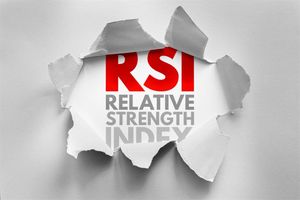Impact funds offer a lower-risk proposition for private-market investors

Impact investing funds generate lower returns than public equity markets but they perform comparably to non-impact private-market funds on a risk-adjusted basis, new research shows.
Impact funds, as a result, offer lower-risk investment opportunities at similar costs as non-impact funds, researchers found, making impact funds an attractive option for private-market investors with social and environmental goals in venture capital, growth equity or private equity generally.
The research by Cornell SC Johnson College of Business assistant professor Kelly Posenau and her co-authors indicates that private market impact funds — vehicles that direct capital to companies that generate impact environmental and social benefits — can help investors reduce market risk exposure and diversify portfolios.
While impact funds are typically known for their environmental and social goals, “adding impact to a portfolio may lower market risk exposure,” Posenau told Alli Romano in an article posted on the business college’s website. “And they don’t necessarily require the financial trade-off most people assume.”

Posenau and co-authors HEC Paris associate professor Jessica Jeffers and Yale School of Management doctoral student Tianshu Lyu recently published their findings, “The Risk and Return of Impact Investing Funds,” in the Journal of Financial Economics.
While other researchers have focused on the returns — or lack of — from impact investing, Posenau and her co-authors opted for a different lens: Concentrate on the risk exposure and performance of private-market impact funds.
“We wanted to add more nuance to the debate about impact investing, specifically how it could fit into investor portfolios from a risk perspective,” she explained.
Posenau said impact funds invest in companies typically in their early stages and deliver financial results comparable to those of non-impact funds. Thus, they can be used as a tool to balance more high-risk, high-return investments.
Studying private market funds has been challenging due to a lack of information, but that didn’t deter Posenau and her co-authors, Romano writes.
The researchers constructed a database of fund cash flows from 94 funds of different asset classes, vintage and sizes, covering activity from 1999 to 2021. They built a benchmark for non-impact funds that matched impact funds based on asset class, vintage and size, enabling comparisons between impact funds and non-impact assets.
As they analyzed the data, Posenau said she was struck by the variety of firms receiving impact investment: They ranged from firms specializing in climate technology to education and regional development.
“We saw companies targeting a wide range of goals at different stages,” she said, adding, “Many impact funds were balanced across different-stage companies.”
Another key finding from the literature is that, as private capital providers, impact funds, have opportunities to influence the strategy and governance of companies more directly than investors in large public companies, who typically have limited input.
“These funds tend to invest in early-stage or growth companies towards the beginning of their life cycle, and capital becomes important for survival,” she said. “Investors can generate a lot of impact; their voice makes a difference.”
Posenau became interested in impact investing in graduate school at the University of Chicago’s Booth School of Business when she observed environmentally and socially conscious investments gaining traction. At the same time, Posenau and co-authors noticed a lack of solid evidence on returns and portfolio risk contributions, which inspired her to research impact funds and private markets.
At SC Johnson College of Business, Posenau teaches managerial finance to graduate students. While she doesn’t cover private markets as part of the class, she shares her findings anecdotally to illustrate portfolio theory and systematic risk management.
Read more: ImpactPHL aligns investments with values, using a local lens
More News
View More



Recent Quotes
View More
Quotes delayed at least 20 minutes.
By accessing this page, you agree to the Privacy Policy and Terms Of Service.